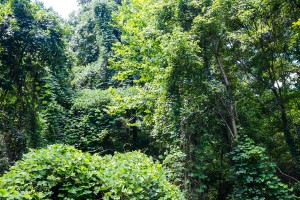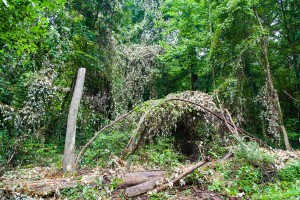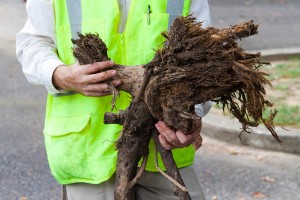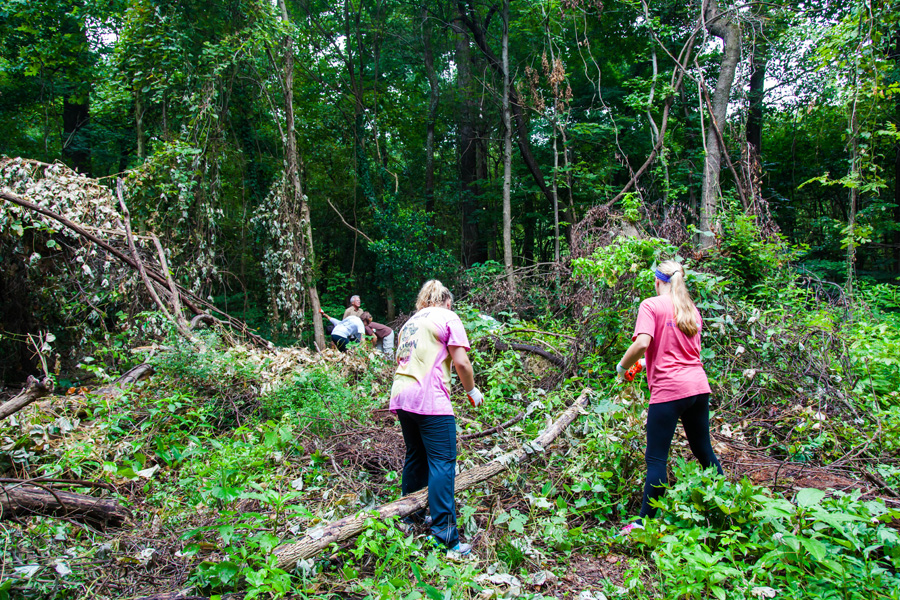Combating the Kudzu

If you’re reading this anywhere in the Southern United States, you’re bound to be familiar with kudzu. This plant, which is native to Asia, was introduced to the United States as an ornamental plant in 1876. It was distributed widely as a garden plant, as food for livestock, and as an erosion control aid for many years, until being declared a noxious weed by the USDA in 1976. Today, the vine covers more than 7 million acres of the South, draping itself over trees and power lines, blocking sunlight from forest floors, and generally overtaking any area where it can become established. It can grow up to a foot a day during the summer and take up to ten years to completely eradicate, making it very difficult for land managers to control.

That’s why when we noticed some resprouting kudzu in the Old Forest recently, we jumped into action. Our Director of Operations, Eric Bridges, has been tracking the kudzu with the help of several dedicated volunteers. They began by mapping the infestation locations and developing a plan to prioritize removal. They’ve been cutting the vines at knee height, flagging them, and then applying an herbicide directly to the cut area. The flagging, combined with the maps, allows us to return to the affected areas and be vigilant about watching for resprouts. The younger an infestation is, the easier it is to eradicate.
Large infestations require a lot of effort to remove, so we’re extremely fortunate to have had the help of several community groups over the last few weeks. A team of freshmen from Christian Brothers University helped us cut a large swath of kudzu that was blanketing a section of the Old Forest Trail, which Eric then returned and sprayed. What a difference a week makes! The following weekend, a group of students from Rhodes College, along with a team from Youth Villages, helped cut several more large sections, even discovering a huge infestation off-trail that we hadn’t previously noticed. They were also persistent in digging out one particularly huge taproot, which helped us all to realize that the leafy vines smothering trees are only the surface of the problem.

Staying on top of the kudzu is especially important this summer, when we’ve had a number of large trees blow down in severe thunderstorms. When a tall, well-established tree falls, it creates a gap in the canopy, allowing sunlight to reach that part of the forest floor for the first time in a while. This is a fantastic thing for tree seedlings and native groundcovers, which have the chance to grow rapidly and become established with all that extra sunlight. But if an invasive plant like kudzu gets there first, it will prevent the young natives from ever having a chance to grow, seriously jeopardizing the next generation of the forest ecosystem. The more kudzu, privet, and ivy we remove now, the better our chances for a thriving forest full of native plants and animals.
A special thanks goes to our volunteers Lucia Gilliland, Jesse McCabe, John Houseal, Sam Blair, Mike Cooley, and Kyle Simpson, who have been instrumental in creating and executing the kudzu removal plan. We’re lucky to have such great advocates for the park who don’t mind getting their hands really, really dirty!




